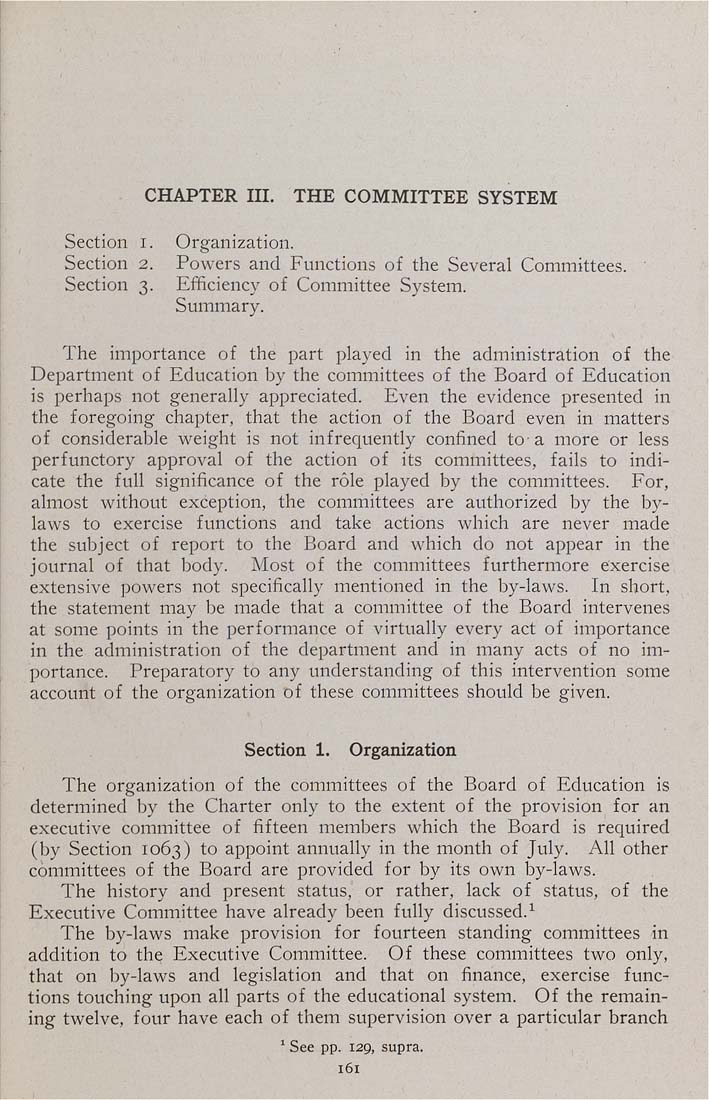CHAPTER III. THE COMMITTEE SYSTEM
Section i. Organization.
Section 2. Powers and Functions of the Several Committees. '
Section 3. Efficiency of Committee System.
Summary.
The importance of the part pla)'ed in the administration of the
Department of Education by the committees of the Board of Education
is perhaps not generally appreciated. Even the evidence presented in
the foregoing chapter, that the action of the Board even in matters
of considerable weight is not infrecjuently confined to-a more or less
perfunctory approval of the action of its committees, fails to indi¬
cate the full significance of the role played by the committees. For,
almost without exception, the committees are authorized by the by¬
laws to exercise functions and take actions which are never made
the subject of report to the Board and which do not appear in the
journal of that body. Most of the committees furthermore exercise
extensive powers not specifically mentioned in the by-laws. In short,
the statement may be made that a committee of the Board intervenes
at some points in the performance of virtually every act of importance
in the administration of the department and in many acts of no im¬
portance. Preparatory to any understanding of this intervention some
account of the organization of these committees should be given.
Section 1. Organization
The organization of the committees of the Board of Education is
determined by the Charter only to the extent of the provision for an
executive committee of fifteen members which the Board is required
(by Section 1063) to appoint annually in the month of July. All other
committees of the Board are provided for by its own by-laws.
The history and present status, or rather, lack of status, of the
Executive Committee have already been fully discussed.'
The by-laws make provision for fourteen standing committees in
addition to the Executive Committee. Of these committees two only,
that on Ijy-laws and legislation and that on finance, exercise func¬
tions touching upon all parts of the educational system. Of the remain¬
ing twelve, four have each of them supervision over a particular branch
' See pp. 129, supra.
161
|








